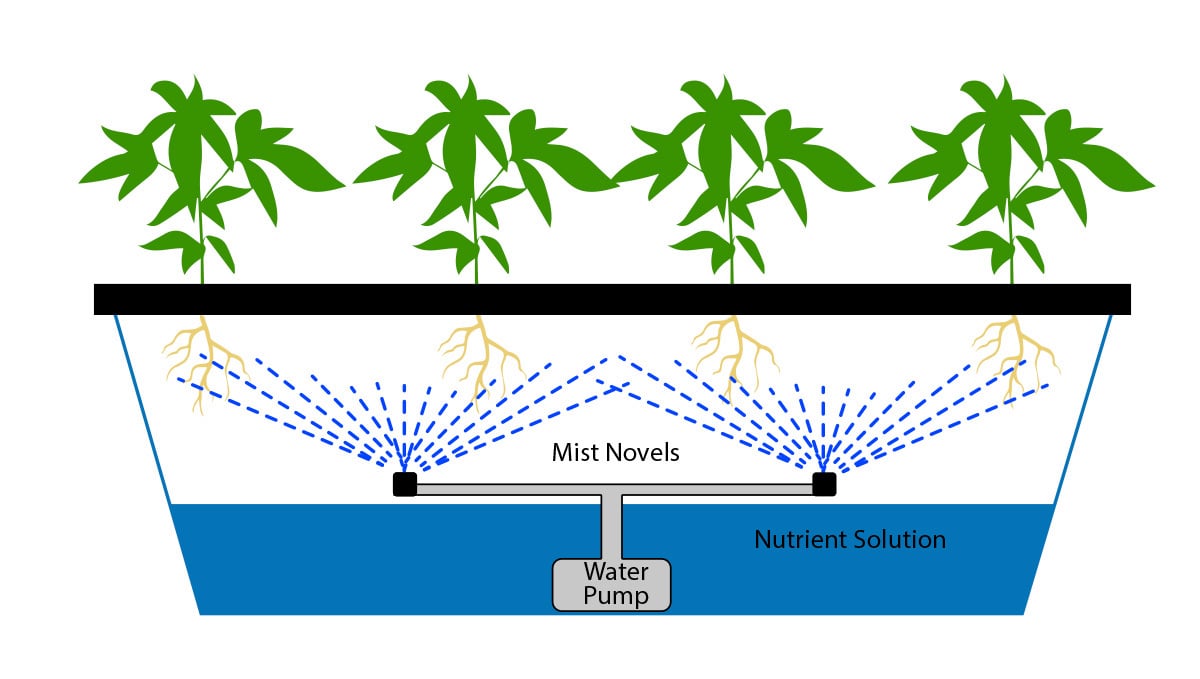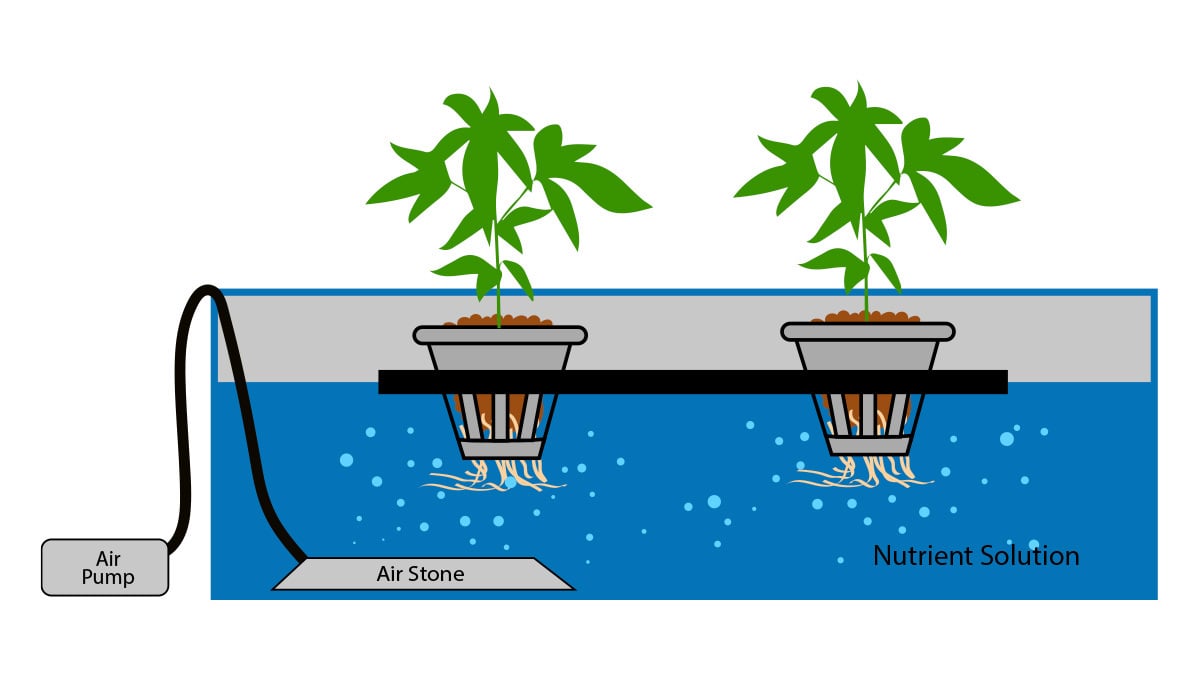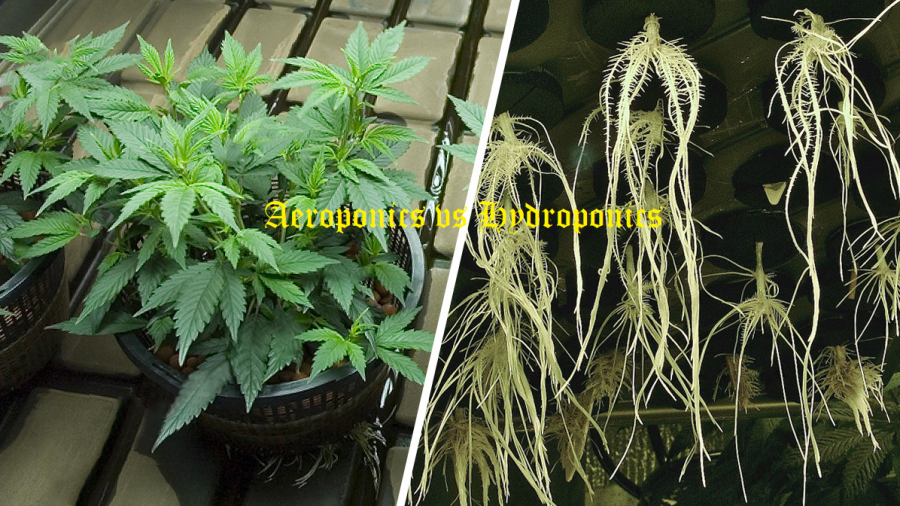Even though these techniques are pretty similar, there are key differences that may incline you to one or another.
There are lots of different ways to grow high-quality cannabis. As a grower, you may find that one way suits you more than an another, based either on your own personal set up, or based on the outcome that you are trying to achieve.
Aeroponics and hydroponics are two prominent methods regarded as the top options for beginners and serious growers of marijuana.
Today, we will provide an overview of both methods and from there, you get to choose which way you want to grow your own marijuana.
Hydro and soil are two great ways to grow cannabis which work better in different setups, despite their differences, you can have great results in both of them.
There are a lot of ways to grow high-quality cannabis. After a certain time growing, you will find the one that suits you the best and allows you to achieve what you look for, based on your budget, experience, or availability.
Aeroponics and hydroponics are methods that have been used for growing vegetables for a long time now, but just for a couple of years, they have been getting implemented in the cultivation of cannabis. These methods consist of growing soilless and exposing the roots directly to the nutrient solution, you can achieve quicker growth and better quality buds if done properly.
Here is a quick and simple comparison of both of these techniques:
1. Aeroponics

Aeroponics is a way of growing where the roots are held mid-air by a special net or pot. Rather than being surrounded in soil, the roots are surrounded by oxygen and CO2 and are misted directly with a nutrient solution that coats the whole roots every 3-5 minutes.
This technique is done indoors as it protects the plants from external elements and allows the grower to have complete control over the environment.
Pros
• Higher Yields
Different from other techniques where plants have to “fight” for nutrients, in aeroponics the nutrient solution is delivered directly to the roots. This translates into bigger yields and faster growth.
• Better Nutrient Absorption
The lack of medium means there will be a higher nutrient absorption. Because the nutrients are misted on the roots, there will also be less or zero waste of water and nutrients.
• Easy Transplanting
If you happen to have to move the plants, there will be almost no risk of damaging the roots. You can just lift the pot and transfer it to another reservoir. Because there is no medium, the plants won’t even feel it.
Cons
• High Maintenance
Aeroponics is a system that is super sensitive and requires high maintenance. Because the roots are openly exposed, everything has to work at the correct time. If the power goes out for a couple of hours, they will not get hydrated and will die.
The systems also need to be cleaned bi-weekly and be checked on 24/7.
• High Cost
Because an aeroponic system depends on quite a lot of equipment and uninterrupted electricity and water, the initial costs are high compared to other methods of growing.
Although there are some things that you can o yourself at home, some you will need to buy. Don’t cheap out on them, they will be responsible for your plant’s growth.
2. Hydroponics
Hydroponics is what gave birth to aeroponics and can be used with other types of medium (like coco fiber, clay pebbles, or rock wool among others). By eliminating soil we reduce the chances of getting some pests that rely on soil in their life cycle.

This method consists of submerging the roots in a nutrient solution. This way they can feed the amount they need when they need it.
The oxygen is delivered either by oxygenating the water with air rocks or draining all the solution every 10 minutes or so.
Pros
• Water efficiency
Almost all growers who grow in soil or other mediums grow in a drain-to-waste system. This means the runoff water goes to waste.
In hydroponics, this can be avoided by recycling the nutrient water. Because the water doesn’t go through any type of medium, it comes out fairly clean and can be reused several times.
• More Control Over The Nutrients
In hydroponics we provide a solution in which plants can feed the amount they need when they want to. Because of this, we have more control over the speed and growth of our plants.
• Relatively Affordable
Although this is a relatively new method of growing cannabis, it is cheaper than aeroponics.
The initial cost can seem expensive compared to growing in soil, but in an individual hydroponic system, you can grow a large number of plants which can even yield more and better quality.
The extra money spent (compared to soil) will come back in the form of better quality buds and higher yields.
Cons
• Diseases Spread Easier
Because the plants are all in the same reservoir, if one gets a disease it will quickly spread it to others. That is one of the worst things about growing in hydroponics if you aren’t very experienced.
• Low Oxygenation
In hydroponic systems, you will need to oxygenate the solution that feeds your plants. This means spending an extra couple of bucks in air stones and you will need to check on them every day.
If one of them fails, be sure to have a replacement ready. If your plants are submerged in a solution without oxygen, they will drown and die.
Why Use Aeroponics?
Why might someone use aeroponics over hydroponics? This is all highly dependent on the type of weed and quality you’re looking to grow. For one thing, aeroponics generally enjoys a higher yield than hydroponics.
Why?
Better aeration of the roots.
Though plants being grown with a hydroponics system do sit in oxygenated water, they still cannot hope to compete with the oxygen exposure enjoyed by the roots of aeroponics plants.
This oxidation often promotes more robust growth in aeroponics.
Aeroponic plants are also often healthier, or at least less at risk for encountering disease. This is largely due to the fact that they are grown in a highly controlled environment that is not subject to the variables of the outdoors.
This is also due to the fact that the constant exposure to water that hydroponic plants deal with can result in bacteria growth.
If you are looking for dependable plant growth and health, you may find that aeroponics is the most stable option for providing you with it.
Some planters may also appreciate the fact that it’s slightly more environmentally friendly than hydroponics.
While both methods are less environmentally impactful than traditional grow methods, aeroponics is given the slight edge in terms of environmental impact because it uses less water.
Why Use Hydroponics?
While it does seem like aeroponics wins out in two of the most important categories (plant growth and health) there are certainly reasons that people would choose hydroponics as well.
Namely, cost, and stability. Both options require an upfront cost that is higher than that of traditional planting. However, because of all the equipment that is necessary in order to make aeroponics viable, the upfront cost is significantly higher.
How much either option might cost, or what they might entail in terms of equipment will ultimately be mandated by what you are trying to achieve. In either case, professional quality setups can cost in the $5K – $10K range or you can find individual hydroponic setups like Grobo for $1999.
However, once the upfront costs are paid, hydroponic growing operations are usually self-sustainable enough not to require much in way of further expense.
Aeroponic growth, on the other hand, is entirely contingent on the well-being of the machines that facilitate the operation. If one of the machines goes down, the plants will die within hours of the error.
This margin of error leaves growers with two options. Either they can accept the possibility that there growing efforts have a built in element of instability, or they can invest heavily in back up equipment, which further increases the cost.
It’s also worth noting that, while aeroponics does often produce bigger, healthier plants, both options do usually produce good yields.
Choosing Between Aeroponics and Hydroponics
Ultimately, deciding between aeroponics and hydroponics will be contingent on what you hope to accomplish. However, if plant quality is your exclusive concern, you will probably find that aeroponics wins the ware, even if they did lose a few battles.
The high plant yield, and the low risk of disease makes it a very good option for professional cannabis growers.
However, if you are working with a restrictive budget, you can also find good results with hydroponic methods. Ultimately, you will simply need to decide on the set up that suits you best.

I love this simple explanation of Aeroponics and Hydroponics. I’ve been doing hydroponics for the past year and had bad results with root rot and dying plants after a few months. Now I know I need to check the water PH. Thanks so much for tips.